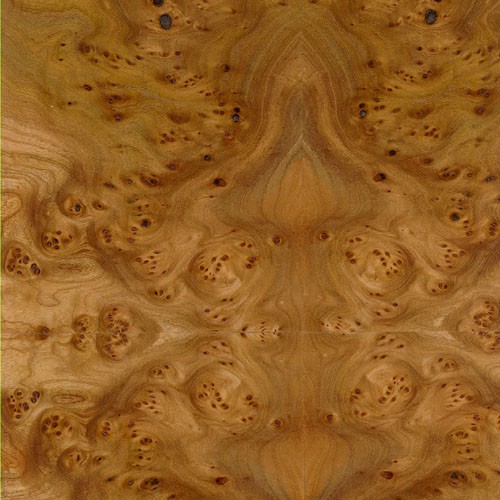African Walnut
[Lovoa trichilioides]
An evergreen species primarily native to West Africa, African Walnut grows in moist, tropical areas from Sierra Leone to Nigeria and as far south as Angola. Though, it also occurs in other Central African nations, including Democratic Republic of the Congo, Tanzania and Uganda.
Sometimes referred to as “Congowood,” “Dibetou” or “Tigerwood,” African Walnut isn’t actually related to the true Walnut species in the Juglans genus. Instead, it’s more closely related to Mahogany, sharing many similarities with African Mahogany. That said, African Walnut is just as hard as American Black Walnut with very similar compression along the grain.
Featuring a clean, handsome look that tends to darken over time, the heartwood of African Walnut is a golden yellow to reddish brown color, sometimes with darker streaks and veins. Its clearly demarcated sapwood is yellow to light gray in color and generally narrow. Occasionally straight, the grain is usually slightly interlocked, and – when quartersawn – displays an attractive ribbon-stripe figuring. It has a fine-to-medium, uniform texture.
Overall, African Walnut is easy to work with — turning, finishing, and gluing quite well. Making it a popular choice for wood veneer sheets, custom plywood, flooring, furniture, cabinetry, and turned objects.
Species Distribution:
Tropical Central Africa
Sierra Leone
Liberia
Ivory Coast
Ghana
Nigeria
Cameroon
Gabon
Republic of the Congo
Angola
DRC
Tanzania
Uganda
Common / Alternative Names:
Congowood
Dibetou
Tigerwood
Janka Hardness:
940 lbf
Sustainability Status:
CITES Appendices: Not listed
IUCN Red List of Threatened Species: Listed as a species of least concern.









